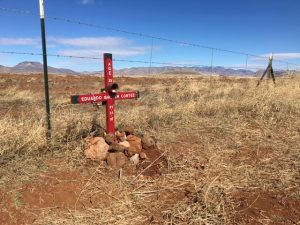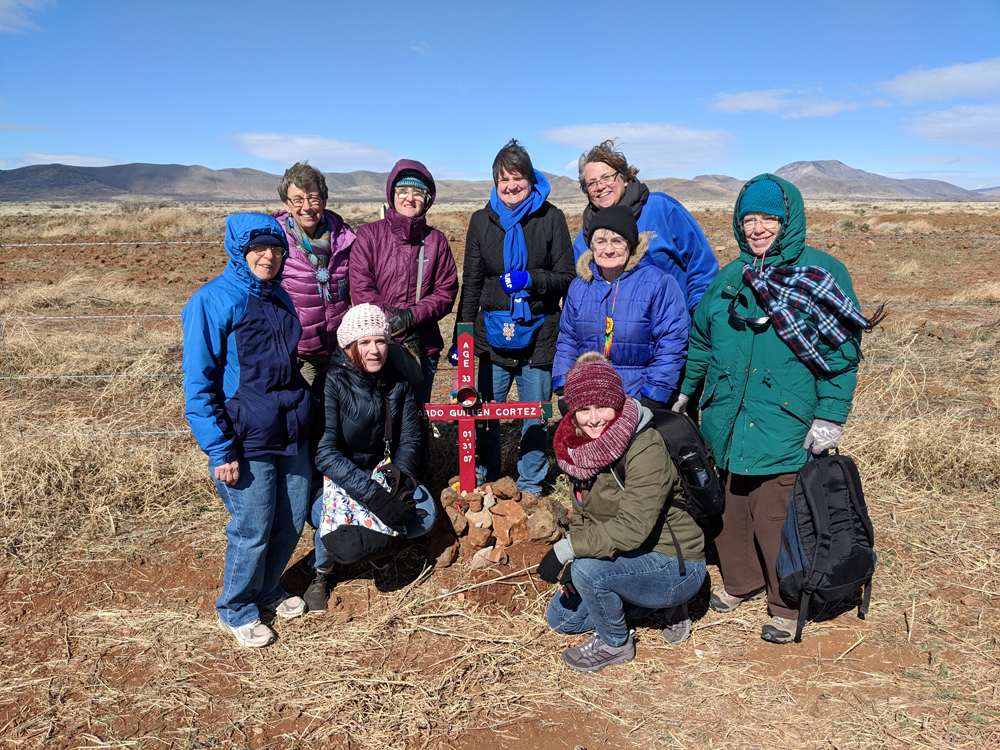
Back row from left: Sister Judy Bourg, SSND, Anna May Thurchak, Maryanne Miloscia, Sister Bridget Waldorf, SSND. Front row from left: Sister Lucy Nigh, SSND, Laura Kraytem, Sarah Allen Raymond, Sister Helen Jones, SSND and Sister Pat Ferrick, SSND.
Four teachers from Academy of the Holy Angels in Demarest, New Jersey, traveled to Douglas, Arizona, Feb. 17-22, for an immersion experience with School Sisters of Notre Dame who minister on the U.S.-Mexico border. Joining them is Sister Bridget Waldorf from Dallas, Texas, team member of vocations ministry.
The SSND Mission Awareness Program (MAP) offers participants a fresh awareness of our oneness, our interconnectedness and our interdependence while sharing in prayer, community and ministry with the SSNDs. In Arizona, the group will learn more about migrant concerns while exploring life in a diverse border community.
FEBRUARY 21, 2019
The name Eduardo Guillan Cortez may not mean a lot to most readers, but for the 22 of us who gathered for a “cross planting” 45 minutes east of Douglas, AZ, the person who embodied that name was the sole focus of our attention today. Cortez, age 33, was a victim of hypothermia which he suffered and died from 11 years ago while trying to cross the Arizona desert, seeking to begin a new life in this country. The cross planting memorializes Cortez at the spot near to where his remains were found in 2007 and gave all present an opportunity to remember him in word and song, pray for his grieving family and pray for all those who come to the United States in search of a better life.
- Sister Bridget Waldorf, SSND
FEBRUARY 20, 2019
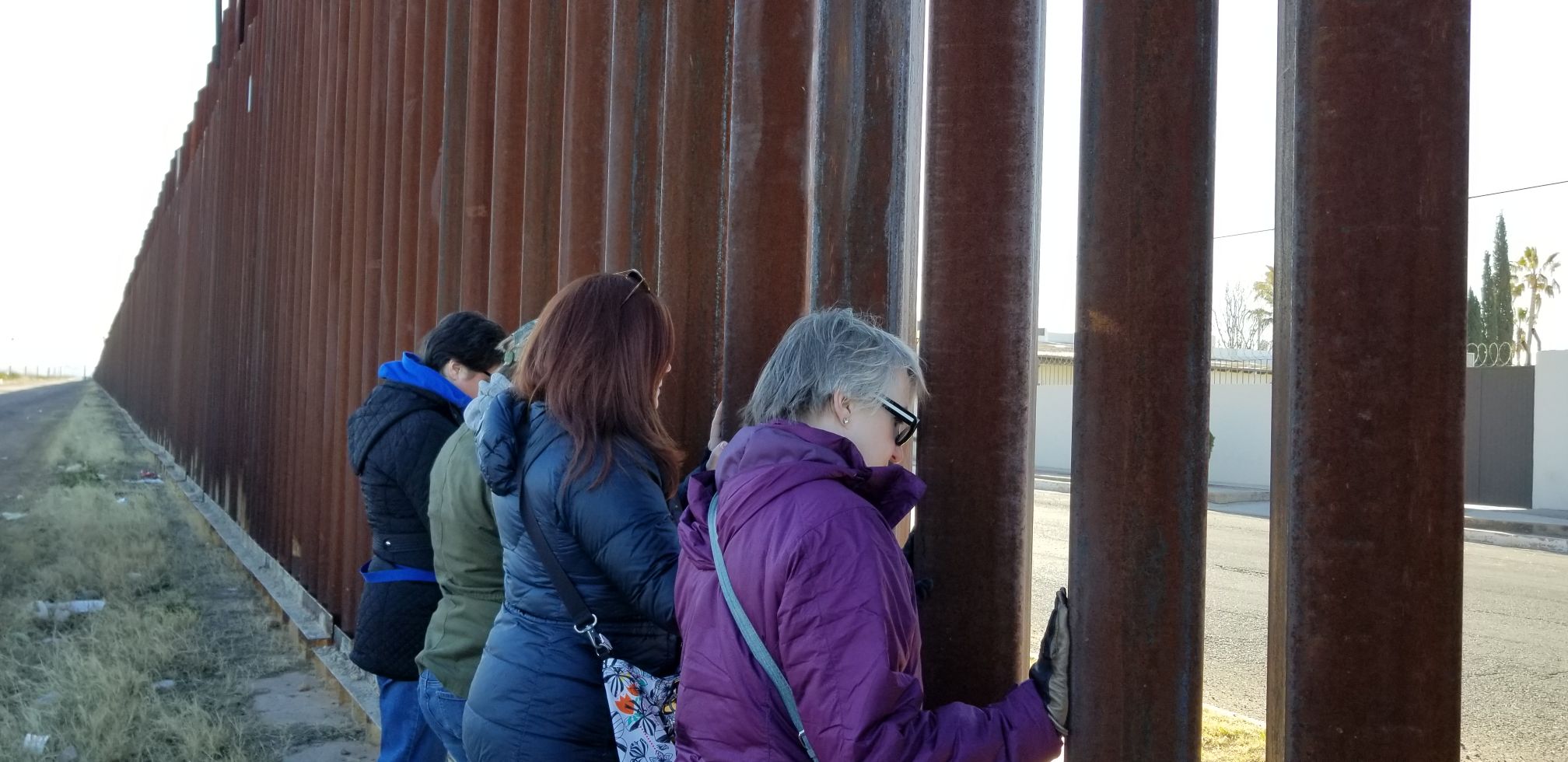
The four teachers pray at the wall.
We are standing on holy ground. It is holy because God created it. During our visit at the border we have seen the face of God in so many people. In the tired, assaulted, hungry and sick migrants to the many humanitarians from Mexico and the U.S. They are building relationships and working together. We have also seen the face of evil and the face of injustice.
I feel privileged to stand in solidarity. I am committed to telling the stories of all I saw and I thank the School Sisters of Notre Dame here at the border for their work with the migrants and the knowledge and awareness they gave me.
- Laura Kraytem
FEBRUARY 19, 2019
Very powerful and moving day today in Tucson & Douglas.
We attended the Vigil in Douglas for migrants who have died in their county. There were about 50 people at the Vigil. Each person was given a cross (we repeated this a few times each). When it was your turn you said the name of the person on the cross & everyone would respond “presente.” You would then go to the back of the line with another cross. The crosses were laid on the sidewalk after the names were read & it was such a powerful moment to see all the crosses laying on the sidewalk stretching for over 2 blocks.
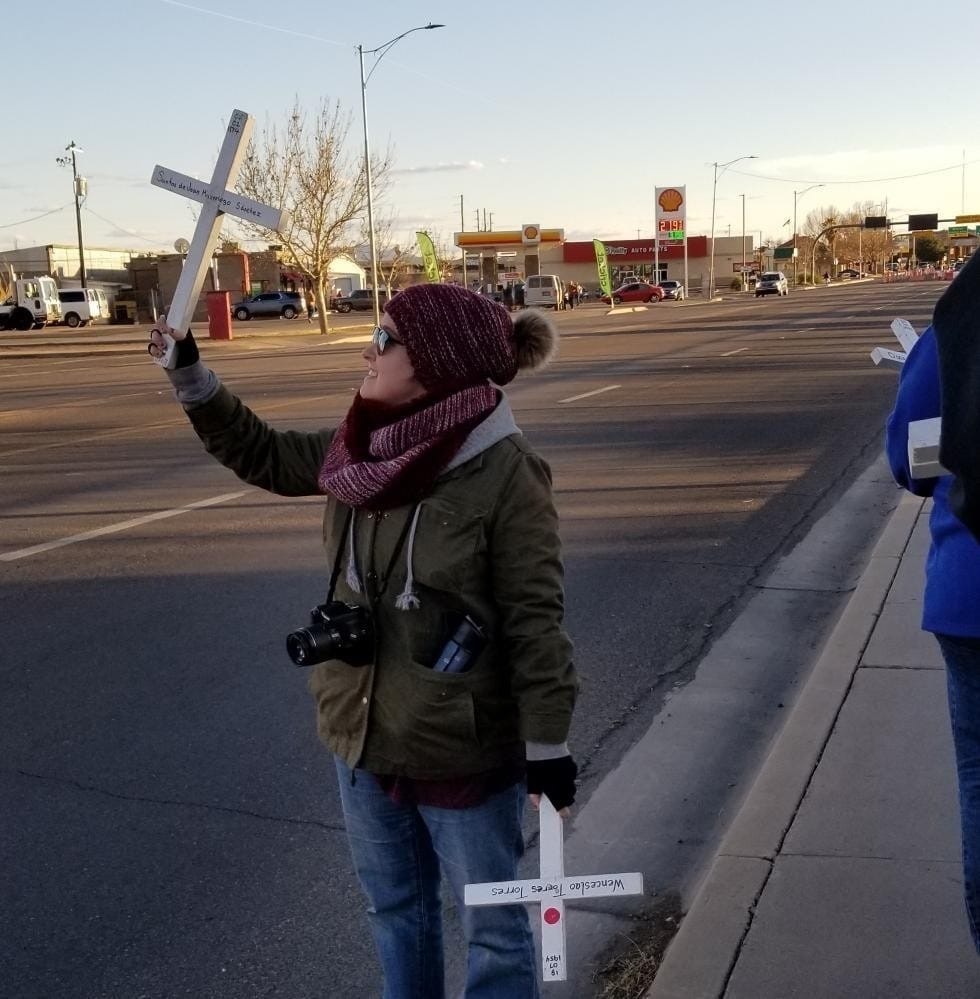
Sarah participates at the vigil.
The crosses that touched me the most were the no identicada or identicado (not identified). It is heartbreaking to think of the many family members who do not have closure as to what happened to their family members. I can’t imagine as a mother not knowing what happened to their child. We learned earlier in the day that at first crosses said desconocido (unknown) but now have been to no ideticado because they are known to God just not identified. What a beautiful sentiment.
- Maryanne Miloscia
FEBRUARY 18, 2019
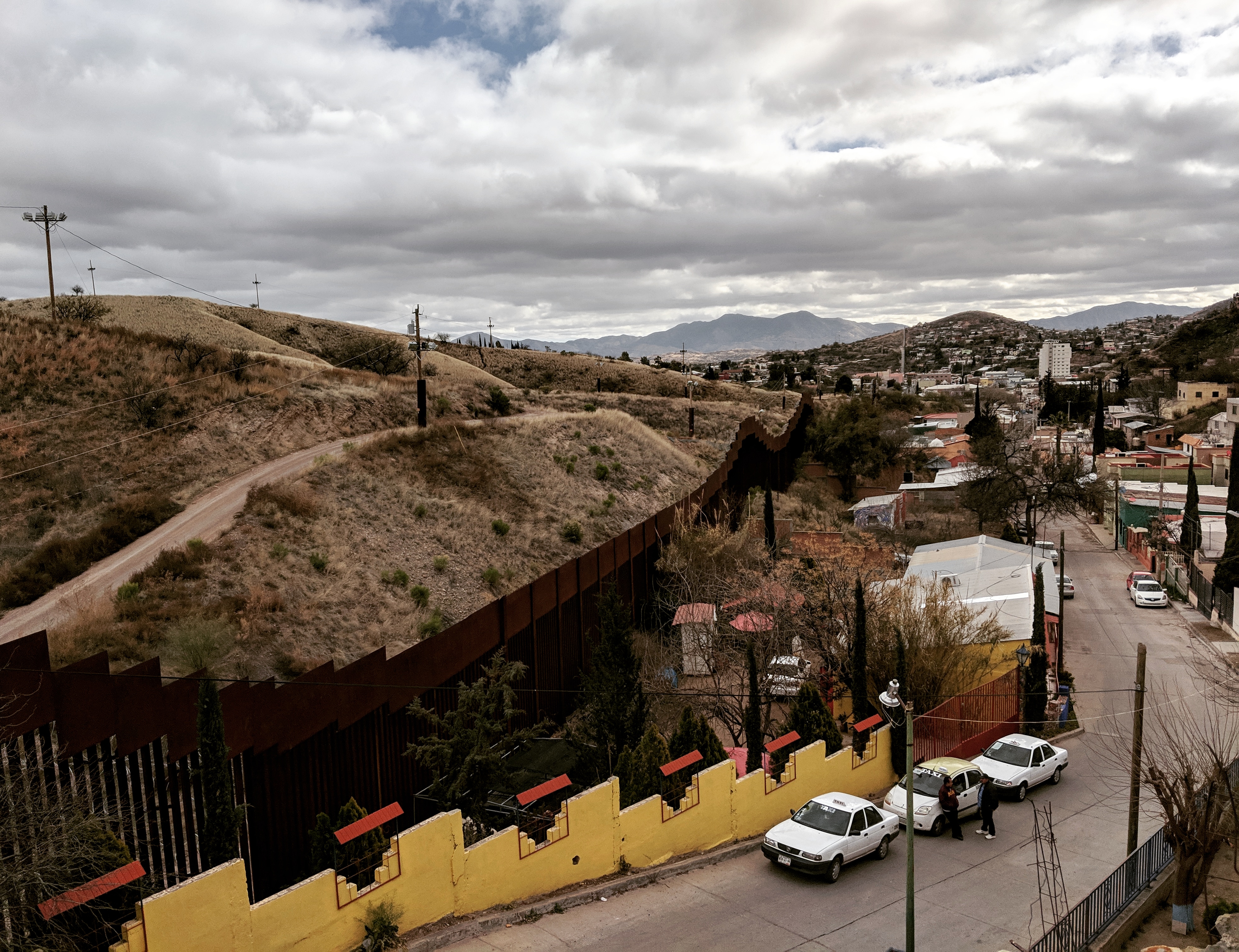 Today as I met many migrant families at the kitchens and shelters in Nogales, Mexico, I affirmed what I had long suspected about the nature of our border crisis. It is not a crisis caused by caravans of “dangerous hombres.” It is a crisis of desperate men, women and children who seek better lives, and find still more suffering at our border. But they are hopeful and grateful nevertheless. We visited La Roca, a small shelter with meager accommodations for asylum seeking migrants. We were cheerfully greeted by all the people staying there. A small boy – maybe 4 or 5 years old – hugged each of us in turn. He was positively thrilled with the stuffed duck we gave him. When we were leaving I saw him again, still clutching the duck gleefully. Obviously, he didn't speak English, and I do not speak Spanish, so I just waved, smiled and said, “Quack quack!” He laughed and whacked back. That smiling child’s face is etched in my mind. HE is the crisis at the border. It shames me to know that our country adds to his family’s suffering, rather than mitigating it.
Today as I met many migrant families at the kitchens and shelters in Nogales, Mexico, I affirmed what I had long suspected about the nature of our border crisis. It is not a crisis caused by caravans of “dangerous hombres.” It is a crisis of desperate men, women and children who seek better lives, and find still more suffering at our border. But they are hopeful and grateful nevertheless. We visited La Roca, a small shelter with meager accommodations for asylum seeking migrants. We were cheerfully greeted by all the people staying there. A small boy – maybe 4 or 5 years old – hugged each of us in turn. He was positively thrilled with the stuffed duck we gave him. When we were leaving I saw him again, still clutching the duck gleefully. Obviously, he didn't speak English, and I do not speak Spanish, so I just waved, smiled and said, “Quack quack!” He laughed and whacked back. That smiling child’s face is etched in my mind. HE is the crisis at the border. It shames me to know that our country adds to his family’s suffering, rather than mitigating it.
- Anna May
FEBRUARY 17, 2019
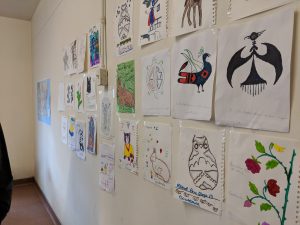 The arts and crafts room as well as the language room at the Benedictine monastery turned family assistance center in Tucson, Arizona, manifested the reality that many families with young children face in making the decision to migrate. The language barrier alone is staggering, with over 60 different indigenous languages being spoken in Mexico alone, yet these families come looking for a chance at a better life.
The arts and crafts room as well as the language room at the Benedictine monastery turned family assistance center in Tucson, Arizona, manifested the reality that many families with young children face in making the decision to migrate. The language barrier alone is staggering, with over 60 different indigenous languages being spoken in Mexico alone, yet these families come looking for a chance at a better life.
- Sarah Allen

